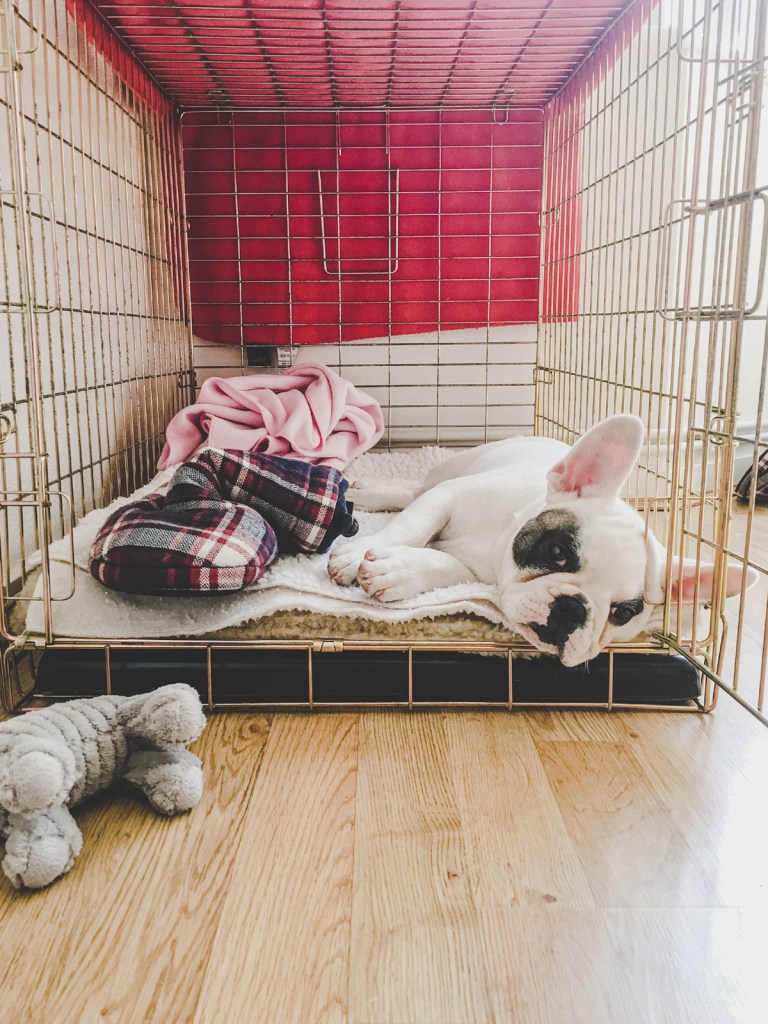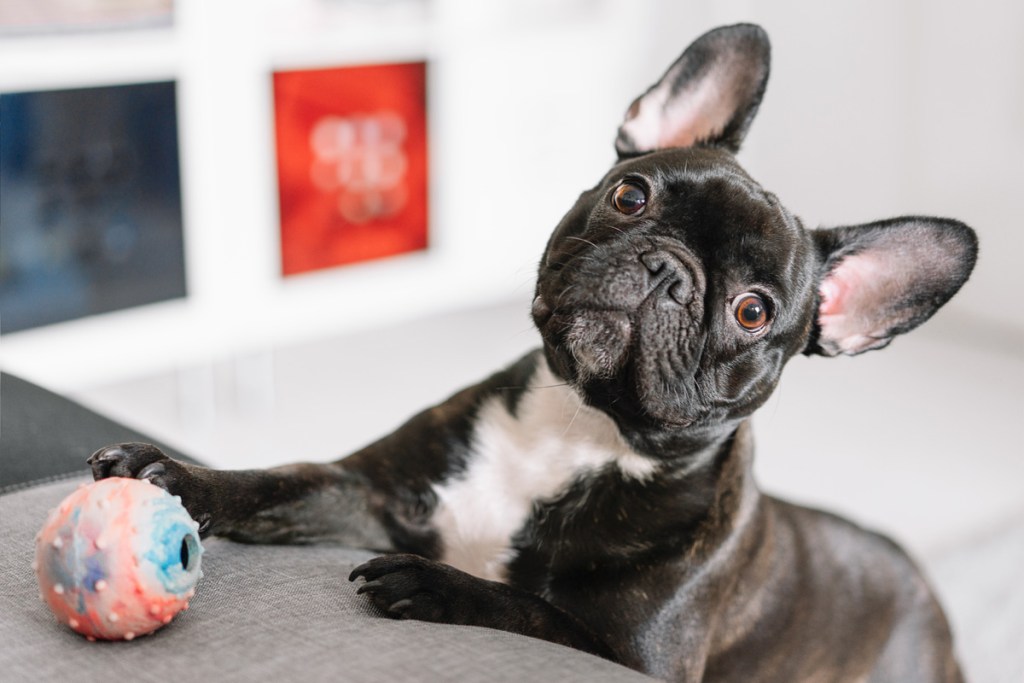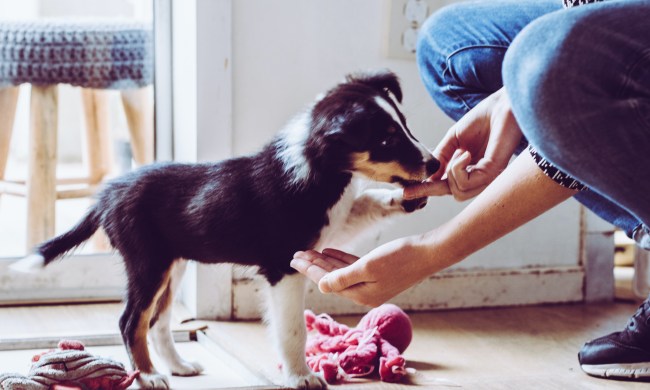Did you ever meet a French Bulldog you didn’t love? There’s a reason this sturdy breed ranks number two on the American Kennel Club’s most popular dog breed list. Pet parents fall in love with these dogs because of their cute bat-like ears, wrinkly faces, and playful, affectionate personalities. Like all dogs, French Bulldogs, affectionately known as Frenchies, need proper training to adjust to family life, and that includes learning to use a crate.
What are the benefits of crate training?
Many pet parents think it’s cruel to confine dogs to crates. However, leading animal rights organizations along with reputable training and veterinary experts say that when used correctly, crates provide dogs with a sense of security. The main benefits of French Bulldog crate training include:
- Helping with potty training puppies and adult dogs
- Preventing destructive behavior when puppies can’t be supervised
- Providing a safe den-like space for dogs
- Making travel safer for dogs
- Keeping dogs safe in hotel rooms
- Helping to safely transport dogs during emergencies

How can I successfully crate train a French Bulldog?
Before training begins, you need to choose the right crate. It should be large enough for your dog to comfortably stand up, turn around, and lay down. Chewy offers a helpful crate size chart along with measuring instructions. When purchasing a crate, choose a size appropriate for your Frenchie when fully grown. You can use a divider to confine your puppy to a smaller space for potty training, as dogs won’t generally soil their sleeping areas. Many crates, such as the highly-rated Frisco Fold & Carry Double Door Crate, include dividers.
Follow these steps when crate training your French bulldog:
- Set the crate in a room where the family spends a lot of time so your dog won’t feel isolated. Place a blanket or soft bed in the crate, and add a favorite toy or bone.
- Introduce your puppy to the crate by dropping treats directly inside the door to encourage him to enter. Never force him into the crate. Depending on your dog, this step can take from a few minutes to a few days, according to training experts at the Humane Society of the United States (HSUS).
- When your puppy enters the crate, praise and reward him but don’t close the door. Continue this training using a verbal cue, such as “go in the crate,” in an upbeat voice.
- Once your puppy is comfortable entering the crate for treats, you can start feeding him once he’s inside. This helps your Frenchie make a positive association with the crate.
- When he’s happily eating meals in the crate, you can start closing the door until he’s finished. Work up to leaving the door closed for up to 10 minutes after he’s done eating. If your dog starts whining, you’re moving too fast, say training experts.
- The next step is to coax your dog to go in the crate for short periods during the day. Close the door, and sit beside the crate for a few minutes. At this point, you don’t want your dog to associate being in the crate with your leaving the room. Eventually, you can start being gone from the room for a few minutes, gradually increasing the amount of time you’re out of your puppy’s sight.
- Once your Frenchie is happy to stay in the crate for about half an hour when you’re out of the room, you can leave the house for short periods. Your dog now can stay in the crate overnight. Keep the crate in your bedroom at night when potty training so your puppy can alert you when he needs to go out.
Are French Bulldogs easy to train?
While Frenchies are known for being stubborn, experts at the French Bulldog Club of America (FBDCA) say that these little dogs are also people-pleasers and “very trainable with the proper motivation.” If you make crate training fun and reward him with treats, your Frenchie will be happy to play along. Because Frenchies put on weight quickly, be sure to use healthy training treats and supplement with your dog’s daily food ration.
Is crate training good for a French Bulldog?
According to the FBDCA, when a crate is introduced properly, a French Bulldog will regard it as a den and a safe haven. This makes housebreaking easier and helps get your puppy safely through the destructive chewing stage. Additionally, breed experts say that crating keeps French Bulldogs safe when traveling, visiting other homes, or recuperating from an illness or injury that requires rest. Crating also can help Frenchies who suffer from separation anxiety. In a Whole Dog Journal article, canine behavior specialist Nicole Wilde says, “It’s often the case that dogs who may feel anxious when left home alone settle down more quickly, particularly if the crate lends a feeling of being safely enclosed.”

Final thoughts on crate training
Finally, experts at the HSUS caution that if used to punish a dog or to confine him for too long, crating will make a pet feel trapped and frustrated. The amount of time you can safely leave your dog confined in a crate depends on his age, and your veterinarian can offer advice on what’s best for your dog. With positive reinforcement training, your Frenchie will see his crate as a cozy place to relax when he isn’t hanging out with you.



